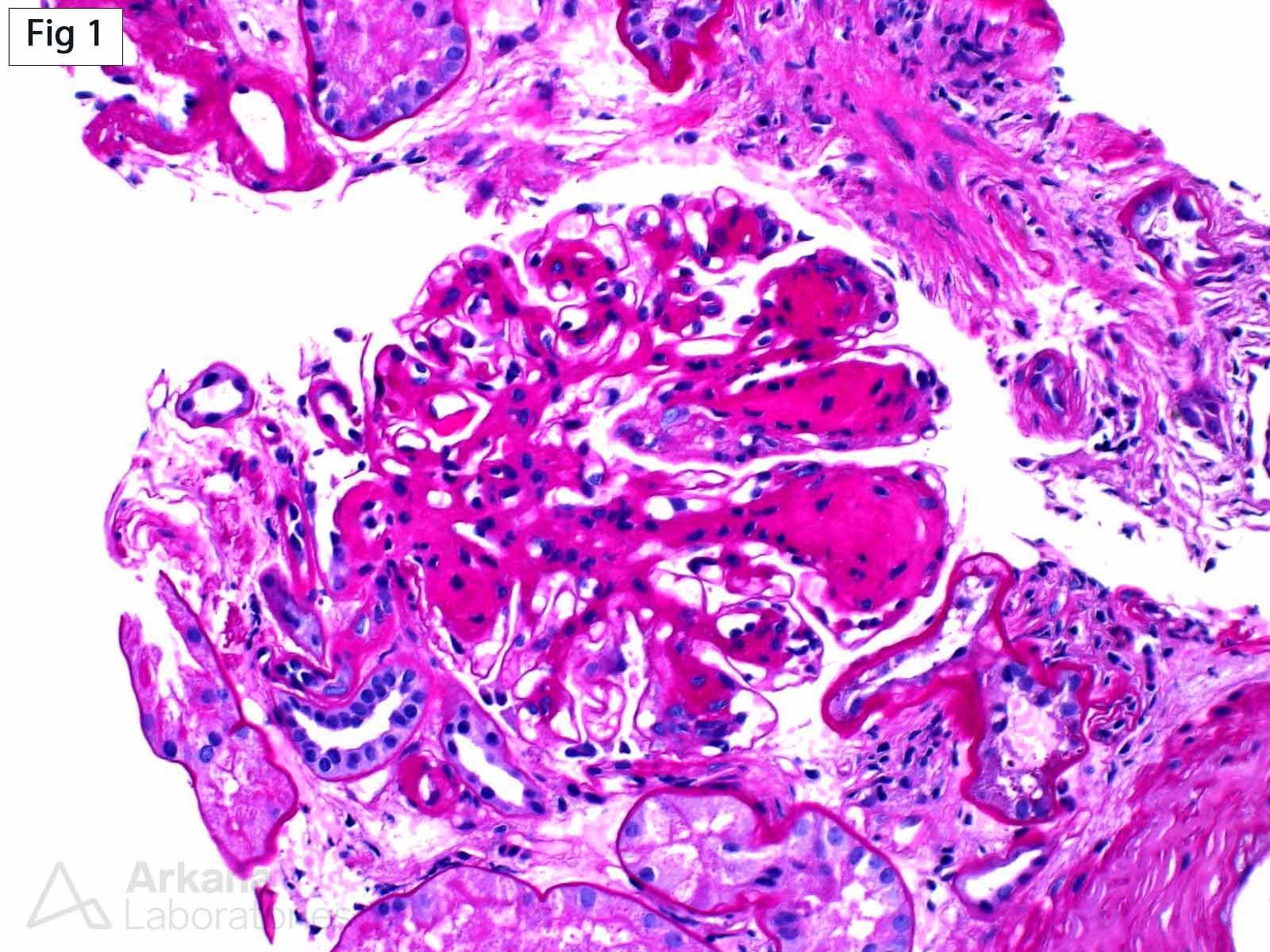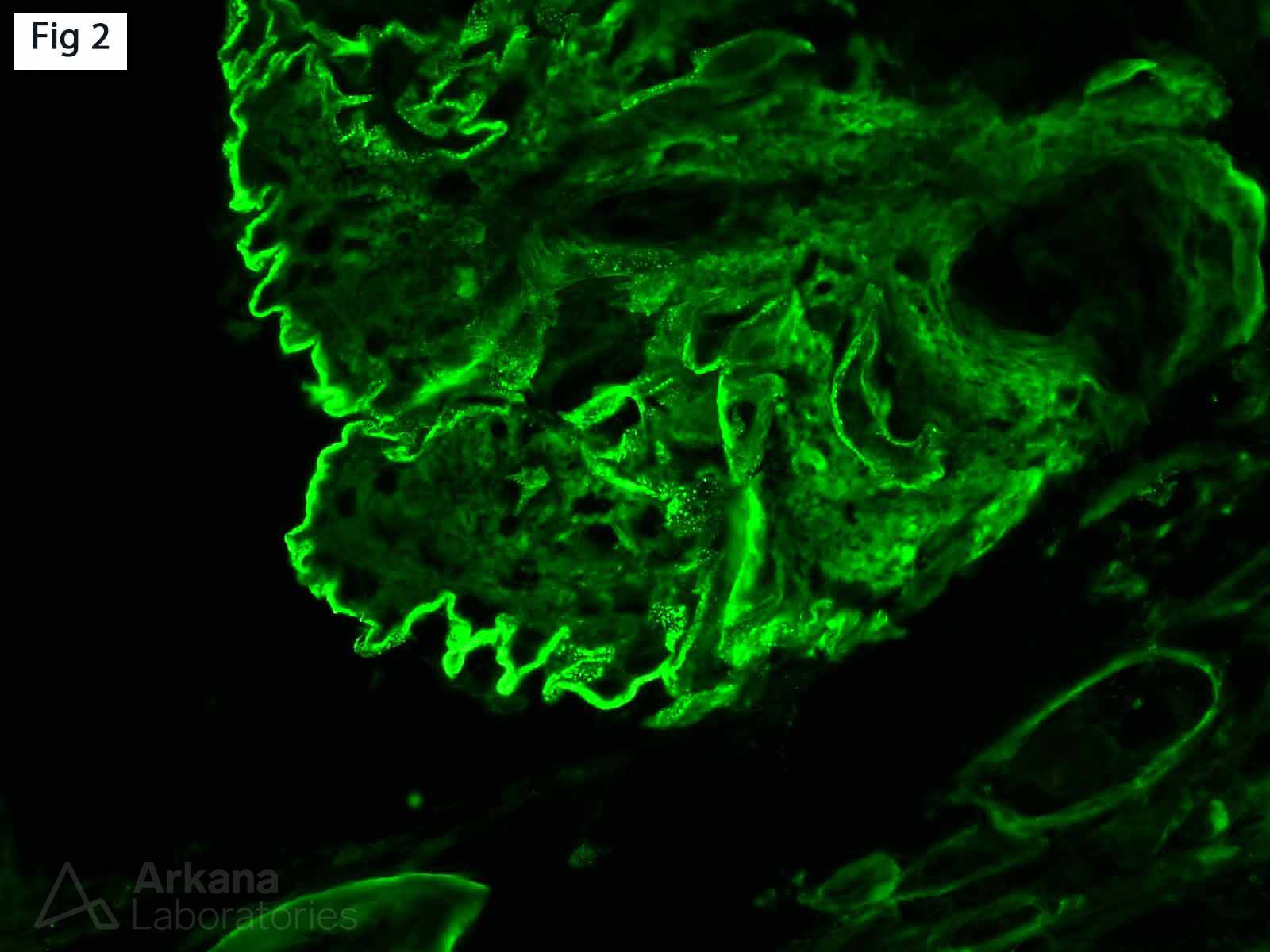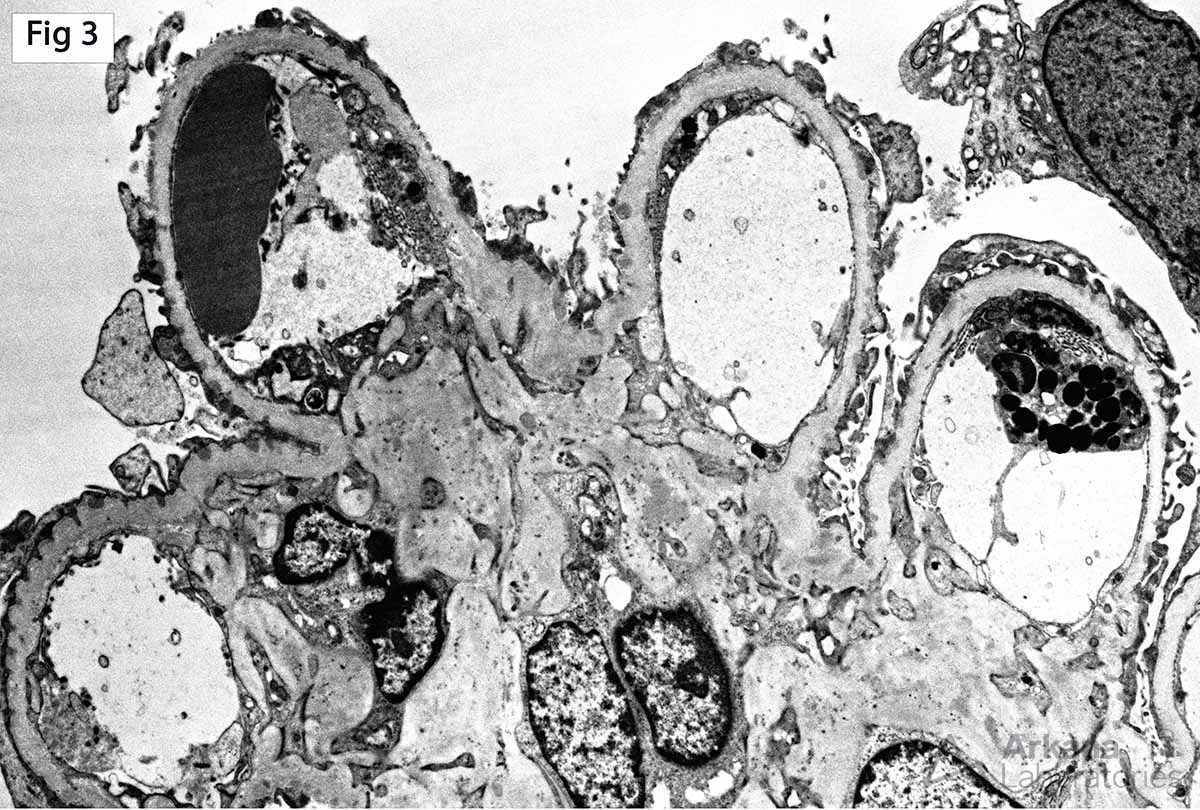Diabetic glomerulosclerosis is one of the most common causes of nephrotic range proteinuria in adults. When the clinical course of these patients is atypical, a renal biopsy is of utmost importance to rule out superimposed or other concomitant diseases. Figure 1 (PAS stain) shows a representative glomerulus from a renal biopsy performed on a 65-year-old Caucasian female with a longstanding history of type 2 diabetes mellitus, who experienced a sudden increase in proteinuria from a baseline UPCR of 1.2 g/g to 7.5 g/g. The glomerulus shows severe mesangial matrix expansion with frequent large nodule formation, characteristic of diabetic glomerulosclerosis. Of note, IgG immunofluorescence stain (Fig 2) shows positive granular staining along the capillary loops with negative staining within the mesangial nodules. This finding is supported by the presence of small subepithelial deposits with minimal reaction of the surrounding glomerular basement membrane by electron microscopy (Fig 3). The aforementioned findings are diagnostic of early membranous glomerulopathy superimposed on diabetic nephropathy.
Quick note: This post is to be used for informational purposes only and does not constitute medical or health advice. Each person should consult their own doctor with respect to matters referenced. Arkana Laboratories assumes no liability for actions taken in reliance upon the information contained herein.





